Newfoundland & Labrador enjoys superb whale watching and guests should be constantly prepared for a viewing – regardless of the season. Every day yields a world of potential, but we must be diligent in our preparations; educating our guests on how and what to watch for, keeping a mindful eye to the ocean, and dressing for every weather occasion. We’d love to guarantee a sighting, but that insurance is only determined by the efforts of the guide and their guests. A willingness and want are the best warranty we can provide.
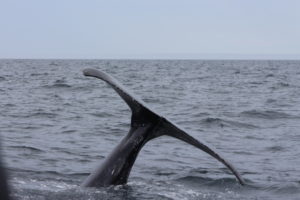
“…superb whale watching…”
We have 21 different species of whales and dolphins in Newfoundland & Labrador, all congregating to gorge on the plenitude of feed supported by our rich marine ecosystem. All summer long, whales follow bait fish that migrate throughout the province’s many different bays and coves. Guests on a 12-day comprehensive Newfoundland & Labrador Tour will therefore maximize their viewing opportunities just by the nature of their journey and the relaxing pace we maintain throughout the week. When we spot whales, adjustments can be made to our schedule so we can stop and provide an appropriate measure of time.
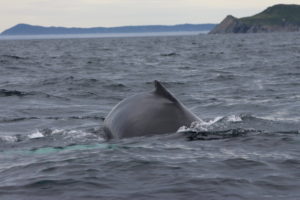
“… the relaxing pace we maintain…”
When it comes to Whale Watching, being close to the water helps. With over 5000 miles of coastline, there is no place in Newfoundland where you can stand further than 92 kms from the ocean. Furthermore, our entire culture is based on the fishery, so nearly every community sits on the waterfront and every roadway stretches along the shore. You are always on the water in Newfoundland and you should therefore see whales. If not, you can still take comfort in the effort and the knowledge base gleaned from your guide, our whaling exhibits, and the conversations with local interpreters.
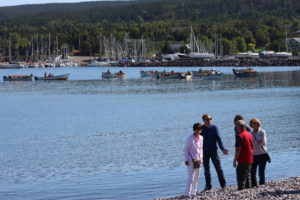
“…close to the water…”
Our whales aren’t on loan from SeaWorld – they are wild animals that are here to eat, gather strength, and wean their calves. Thus, the reason our whales are both numerous and so terribly playful – especially the young ones who are well fed, fear few predators, and are away from their cow mother for the first time. Their breaching is amazing to experience, but so is every encounter – no matter how distant or fleeting.
Whales can be seen everywhere though there are certain areas which offer greater viewing opportunities due to their topography, currents, bait, water temperatures, limited predation, and weather conditions. Favorite sites include Signal Hill, Cape Spear, Cape Bonavista, Twillingate, White Bay, Strait of Belle Isle, St. Vincent’s, Witless Bay, and St. Anthony.
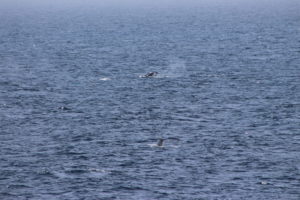
“… multitudes…”
Exactly when whales arrive is determined by the feed stocks which build on our ‘Grand Banks’. These submarine plateaus on the southeast of Newfoundland act as a hinterland for all our ocean species. This is where two of the world’s most polarized ocean currents collide in a massive thrust of energy that churns all the ocean’s nutrients into a slurry of rich planktons and krill that sustain this massive ecosystem.
Most whales show up, starting around May, and hang around into September. About 20 species have been observed off the island, including some rare ones, such as the Sowerby’s beaked whale. Humpback, minke, finback and pilot whales are most common, though sei’s and orcas are on the increase. White-beaked and white-sided dolphins also gorge on the seasonal bounty, as do millions of seabirds, including Northern Gannets and Atlantic Puffins.
It really is a ‘Whale’s World’ and when you spend time with McCarthy’s Tours – you surely must;
“Party On!’
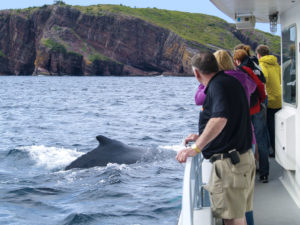
Day 11

